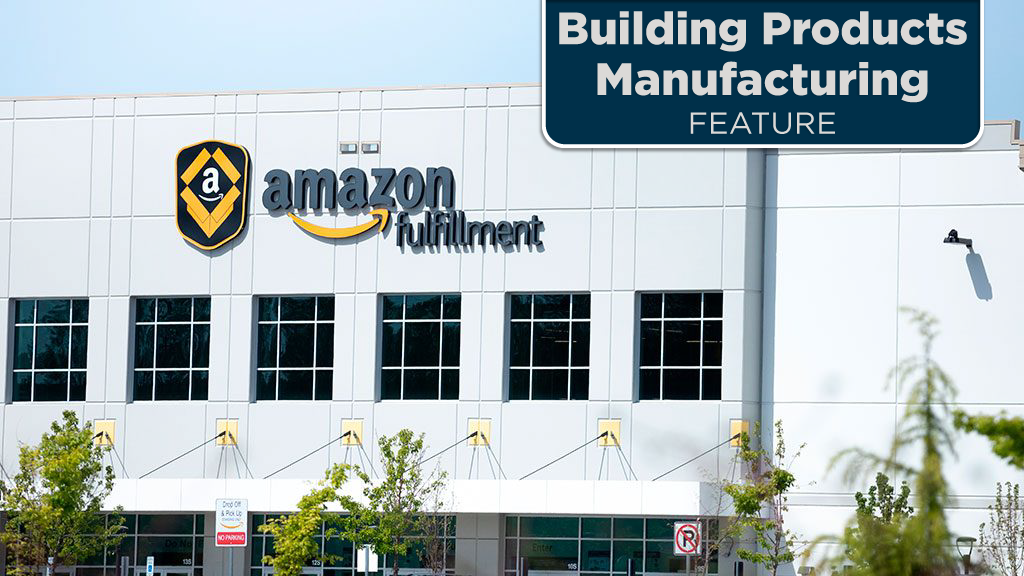For the past year-and-a-half, COVID-19 has been reminding us that many personal and business routines we take for granted can be turned upside down suddenly and irrevocably.
For example, the pandemic has been raising havoc with the supply chains of many companies.
“If companies are worried about their supply lines being disrupted, they’ll be stocking more inventory,” said Alex Carrick, ConstructConnect’s chief economist. “That means more warehouses will need to be built, which means more work for Canadian contractors. And the post-pandemic surge in economic activity that is expected will require more warehouses full of construction materials.”
Michael Farrell, principal in the Vancouver office of commercial real estate brokers Avison Young (AY), says there is a large and growing appetite for industrial warehouse space in the Lower Mainland, mainly from e-commerce companies selling consumer products.
“But there is a limited supply in the region,” said Farrell.
“Since 2016 the vacancy rate for industrial warehouse space here has been less than two per cent,” said Farrell. “Now it’s approximately 0.6 per cent. The normal range is between six per cent and 10 per cent. The result is a huge amount of unsatisfied demand.”
In neighboring Alberta, the healthy demand for industrial warehouse space has been easier to supply.
“Both demand and supply increased during the pandemic and we expect to see high activity volumes continue,” said Tyler Wellwood, senior vice president, industrial sales and leasing in AY’s Calgary office. “Developers responded by moving to meet warehousing demand driven by a strong shift in consumers moving to online shopping.”
Wellwood says in a market with total industrial inventory of 145 million square feet (MSF), 3.9 MSF is currently under construction, of which 3.2 MSF is distribution warehousing.
“To a large degree, this is enabled by ample regional land supply with development policies that allow for industrial development of certain areas of agricultural land,” said Wellwood.
Although Calgary currently has many vacant offices, it is unlikely there will be many conversions to warehousing.
“Since the supply of warehousing can relatively easily keep pace with demand, allowing for stable rents over long periods, we don’t anticipate requiring conversions in the near future,” said Wellwood.
In AY’s Edmonton office, Grant Ranslam, principal – industrial, said, “While the uncertainty of the pandemic stopped most industrial asset classes in their tracks, more recently we have seen demand return to not just pre-COVID levels, but to levels more reminiscent of 2016.”
The rest of 2021 will likely continue the trend of modest recovery and stabilization, he says, with 2022 expected to be a strong growth year.
Regarding regional supply, in 2020 developers were quick to put the brakes on any new construction, Ranslam says.
“Since then, most developers with land positions have put plans in motion and shovels in the ground to deliver new product as soon as possible,” he said. “Currently there is 3.9 million square feet under construction, which is considered a pretty big number for Edmonton historically. Developers here are quick to react to market influences and will be able to meet increasing demand going forward.”
Ben Sykes, principal – industrial and capital markets in AY’s Toronto office, says the Greater Toronto Area (GTA) went into the COVID-19 pandemic with a record low vacancy rate of 2.1 percent for warehouse space, and since then demand has remained buoyant.
“As store-front retailers shuttered, consumer traffic redirected to online shopping, with companies scrambling to keep up with the demand, and the race for space was on,” said Sykes.
In the near term, the GTA doesn’t have nearly enough warehouse space to satisfy demand, he says.
“Slow approval processes and limited land development sites have compounded the imbalance of demand and supply,” Sykes said. “However, we do have 11 million square feet under construction, and 56 million square feet in the pre-construction stage in the development pipeline. Time will tell if that is enough to satisfy demand.”
In the Greater Montreal Area (GMA), Paul Fredette, principal – industrial and logistics, said, “In-person shopping has shifted to become predominantly deliveries, distributed via warehouses. This has created pressure on suppliers to increase their warehouse space, to keep product moving.
“For example, Amazon is creating a strong demand for warehousing as suppliers are looking to locate near Amazon distribution centres.”
Fredette says the industrial market has been robust since the start of the pandemic.
“Demand is much greater than supply,” he said. “We anticipate that vacancy rates for industrial space in the GMA will continue to hover around 1 per cent, with no relief until 2022-23, when new product becomes available.”
(The author would like to acknowledge the generous assistance of Andrea Zviedris in Avison Young’s Toronto office in research for this article.)











Recent Comments
comments for this post are closed